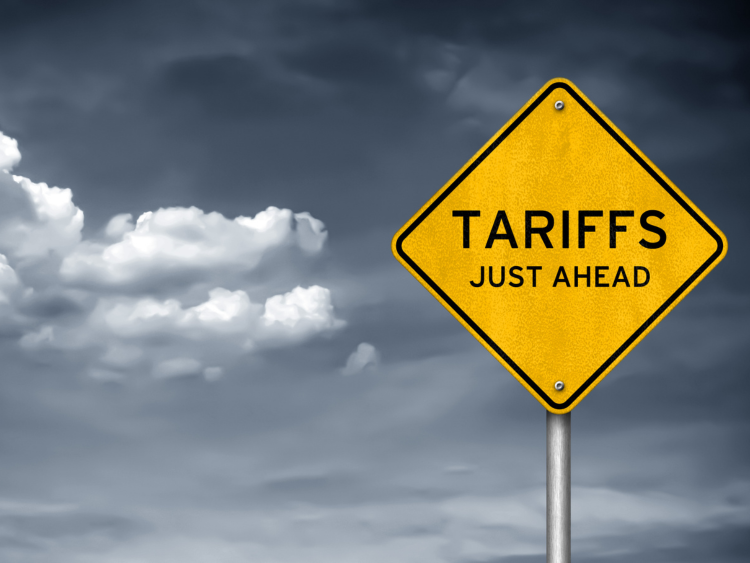Government/Policy

September 5, 2017
Steel Summit: Free and Fair Trade
Written by Sandy Williams
Steel Market Update asked four panelists at the 2018 Steel Summit to define free and fair trade and offer some solutions to what most in the industry consider unfairly traded steel imports.
Philip Bell, president of the Steel Manufacturers Association representing North American EAF steel producers, said there are five components of free and fair trade. Free and fair trade is rules-based and grounded in free market principles; involves open markets that make people want to trade with each other; opposes state ownership and market-distorting subsidies; recognizes the right to use, when necessary, trade remedies and laws to address illegal and unfair trade practices; and includes an inherent right for a country to defend its trade laws.
“To be angry at the mills for wanting the government to enforce its laws,” said Bell, “is like the fire department responding to a five-alarm blaze and being upset with the people who called 911. The mills have a right to do this.”
Trade cases are a last resort for most steel producers, said Bell. Steel cases are expensive and take more than two years to be decided. Even then, the final decisions do not always favor the mills. He went on to talk about the whack-a-mole situation that occurs when imports are cut off from one source and appear in another. He cited the circumvention case currently under investigation regarding Chinese steel that is allegedly appearing as CORE steel originating from Vietnam.
Excess steel capacity is the “gorilla in the room,” said Bell. Today, there is roughly 700-800 million tons of excess capacity in the market, half of that amount in China. It is one thing for China to announce capacity reductions, but another to enforce them, he added.
Bell discounts the arguments that some steels cannot be produced in the U.S., or cannot be produced here as well. The U.S. has enough unused capacity, and enough expertise, to meet all domestic demand. The average capacity utilization rate should be around 85 percent for a healthy industry, right now it is hovering around 74-75 percent, he noted.
Bell contends that Section 232 investigations are necessary because antidumping and subsidy cases are not enough to counteract illegally traded imports. The investigation was self-initiated by the government and actually took the steel industry by surprise. But the industry will take whatever help is offered, he said. The original June 30 deadline was unrealistic and created unnecessary speculation and uncertainty in the industry. The real deadline is actually April 16. SMA, AISI and 25 CEOs sent a letter to President Trump urging the administration to move the investigation along to relieve uncertainty in the market. SMA would like the national security interpretation to be broader to include critical infrastructure, economic health and energy.
Bill Gaskin represents the Precision Metalforming Association, which focuses on flat rolled stamping and fabricating. Gaskin agrees there are some participants in the global steel industry who do not play fair. However, protecting the U.S. steel producers should not come at the expense of other industrial sectors. PMA members rely on flat rolled steel for their industry, and steel averages 50 to 80 percent of manufacturing costs. “If we have a steel industry in the U.S. and a pricing mechanism in the U.S. that is not competitive globally, than we have a problem,” he said. “Solutions are needed that are good for our country and our companies regardless of size and regardless of industry. Not just beat each other up.”
Trade attorney Lewis Leibowitz added his legal perspective to the issue. He defines free trade as basically a minimum of government interference in commerce. AD/CVD, safeguard, and national security orders interfere with normal commerce, but are sometimes necessary, he said. “What we have now is not free and fair trade. We have a lot of government interference and a lack of due process for steel consumers who must bear the cost of these remedies,” he added.
The Section 232 case is an attempt to reduce imports of low-priced steel, but it has other geopolitical implications. “Can we force China or other countries to cut production or capacity? Only to a certain extent,” said Leibowitz, and then negotiation is required. “In order to get something you have to give something. In this case, China wants market economy status. That is the carrot that can be offered to China,” he said, acknowledging that might be an unpopular bargaining chip.
The domestic steel industry must invest in new capital equipment and improved customer service to become permanently and sustainably competitive, said Leibowtiz. “They just want help, and when that is not enough, they want more help,” he said. Integrated and EAF steel sectors may require independent solutions. “We need to find a way to save steel industry jobs and make a sustainable United States steel industry without costing the jobs of many, many others downstream,” he added.
Daniel Pearson, Senior Fellow, Trade Policy Studies at the Cato Institute, agrees there are many challenges facing the steel industry, but disagrees on what should be done about them. “The world will likely never trade in a way that is entirely fair. However, any country can enjoy the economic benefits of free trade simply by keeping their borders open to imports.”
Since life is often unfair, it should be no surprise that business is often unfair, as well, said Pearson. Fairness and unfairness is in the eye of the beholder, for example, whether you are importing or exporting. Export prices from China are unfair, but so are all the trade duties placed on imports from the U.S.
“The government is simply too clumsy to interfere in the market to bring about free trade,” reasons Pearson.
Trade remedy measures tend to multiply the unfairness. Steel is one of the country’s most protected sectors with over 200 AD/CVD duties on steel and iron products. “The effect has been to raise prices well above global producers to the detriment of steel consuming manufacturers,” said Pearson. Steel Benchmarker’s hot rolled band price is 26 percent higher than the world export market. Yet these prices are not high enough to satisfy U.S. mills. “How wide does the price spread have to be before you are going to think the prices is fair,” asked Person. “I don’t think you can get there with import restrictions.” Downstream steel manufacturers are 29 percent higher in terms of GDP and 46 percent higher in terms of employment and are particularly vulnerable to higher steel prices. The effect multiplies when you include the construction sector, he noted.
What is free trade anyway? Free trade does not depend on the trade policies of other countries, rather it is about allowing its own citizens to buy and sell in the open markets without restrictions, said Pearson. Singapore and Hong Kong, with few natural resources, have become two of the wealthiest markets due to free trade. The U.S. would be better off ending its tariffs unilaterally, like these two regions, said Pearson. “If a country is willing to transfer wealth to America by selling artificially low priced goods, perhaps it would be better just to buy them and say thanks.”
The takeaway for Steel Summit attendees: the issue of free and fair trade is a complicated one with many sides to consider. Steel Market Update was pleased to offer a venue in which a variety of views could be aired.
Written by Sandy Williams, Sandy@SteelMarketUpdate.com






